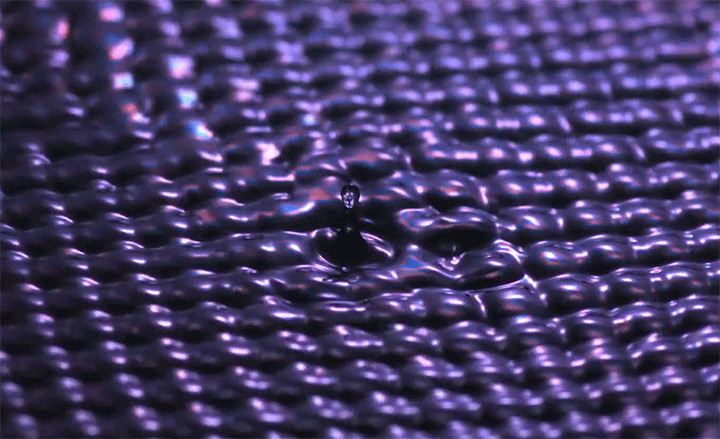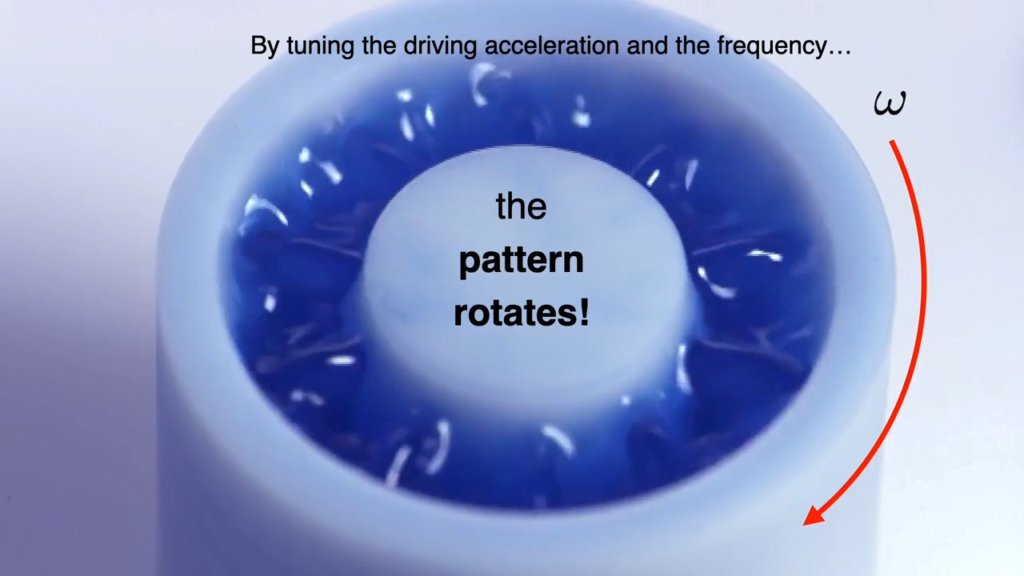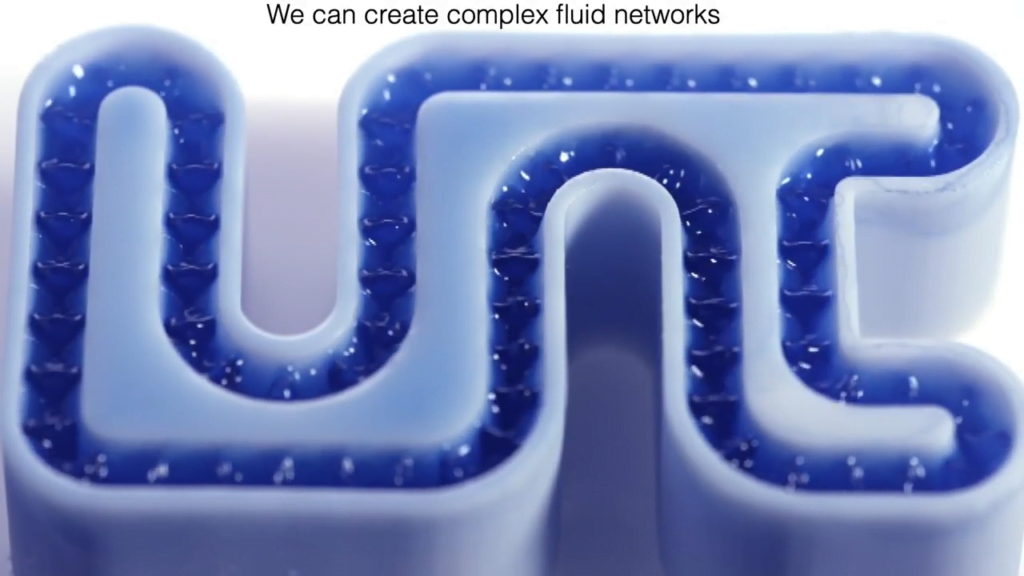Inside musical instruments gapes an emptiness that, to the eye of photographer Charles Brooks, resembles the vast architecture of music halls and cathedrals. In his series “Architecture in Music,” Brooks takes us into these empty spaces, revealing where the resonance at the heart of the instrument’s sound lies. In a stringed instrument like a violin, the vibration of the strings makes a relatively quiet sound on its own; it’s only in making the violin’s entire hollow body vibrate that resonance amplifies the strings. Similarly, wind instruments rely on air resonating within them to produce their sound. (Image credit: C. Brooks; via Colossal)
Tag: vibration

Seeing Sound
Sound, vibration, and motion are all inextricably linked. In this BBC video, physicist Helen Czerski shows how an object’s sound and vibrations relate through the classic Chladni experiment. She vibrates a metal plate scattered with sand. At most vibration frequencies, the particles of sand bounce all over the place with no distinctive pattern. But at an object’s natural frequencies, there are standing waves and the sand gathers in spots where the standing wave has no vertical motion. The higher the vibration frequency, the more complex the pattern the sand makes. All of this plays into the sounds we hear, too. When struck, an object vibrates at many of its natural frequencies at once. That’s what gives us a rich, musical tone — all those layered frequencies. (Video and image credit: BBC)

Galloping Bubbles
A buoyant bubble rises until it’s stopped by a wall. What happens, this video asks, if that wall vibrates up and down? If the vibration is large enough, the bubble loses its symmetry and starts to gallop along the wall. Using numerical simulations, the team determined the flow around the bubble. They also demonstrate several possible applications for this behavior: sorting bubbles by size, traversing mazes, and cleaning a surface. (Video and image credit: J. Guan et al.)

Floating in Sync
Objects on a vibrating liquid bath can interact with each other through the waves they make as they bounce. Here, researchers look at three-armed spinners interacting in pairs and in larger groups. A pair of spinners can synchronize so that they spin together or so that they spin in opposing phases. With more spinners, more complex patterns are possible. The spinners can even “freeze” one another by forming a pattern of standing waves that keep them locked in their orientation. (Video and image credit: J. Barotta et al.; via GoSM)

Swarm of Surfers
Self-propelled objects can form fascinating patterns. Here, researchers investigate how small plastic “surfers” move on a vibrating fluid. Each surfer is heavier in its stern than its bow. When the fluid vibrates, the surfer creates waves that are asymmetric — deeper in the stern than at the bow. For single surfers, this imbalance propels the surfer in the direction of its bow. But with more than one surfer, other patterns form.

The video demonstrates five of the seven patterns pairs of surfers exhibit. The team looked at groups of surfers all the way up to eight members. Among pairs, the researchers found seven distinctive patterns, including orbiting groups, tailgaters, and promenading pairs. Larger groups, they found, had similar collective behaviors. They hope their surfers will be an easily accessible platform for exploring active matter. (Image and research credit: I. Ho et al.; via APS Physics)

Droplet Medusa
Vibration is one method for breaking a drop into smaller droplets, a process known as atomization. Here, researchers simulate this break-up process for a drop in microgravity. Waves crisscrossing the surface create localized craters and jets, making the drop resemble the Greek mythological figure of Medusa. With enough vibrational amplitude, the jets stretch to point of breaking, releasing daughter droplets. (Image and research credit: D. Panda et al.)

Superradiance in Fluids
A group of excited atoms can collectively emit more photons than they could individually in a phenomenon known as superradiance. Now researchers have shown that vibrating fluids can produce superradiance as well.

Two different wave fields used in the experiment, each with a different distance between the circular cavities. Similar to other hydrodynamic quantum analogs, the researchers vertically vibrated a pool of liquid at a frequency that produced Faraday waves. Beneath the pool, they placed two circular wells, varying the distance between them to observe how their wave fields interacted. With a large enough vibration, the two circular wells emitted droplets (top image), and the number of droplets they produced was higher than expected for two independent wells, indicating superradiance. The results suggest that it may be possible to build even more hydrodynamic analogs of quantum systems than previously thought! (Image and research credit: V. Frumkin et al.; via APS Physics)

Paint Ejection
Shaking paint on a speaker cone and filming it in high speed is an oldie but a goodie. Here, artist Linden Gledhill films paint ejection at 10,000 frames per second, giving us a glorious view of the process. As the paint flies upward, accelerated by the speaker, it stretches into long ligaments. As the ligaments thin, surface tension concentrates the paint into droplets, connected together by thinning strands. When those strands break, they snap back toward the remaining paint, imprinting swirling threads of different colors, thanks to their momentum. Eventually, surface tension wins the tug-of-war and transforms all the paint into droplets. (Video and image credit: L. Gledhill)

Little Surfer
Here’s another look at SurferBot, a low-cost, vibration-based robot capable of traversing both water and land. SurferBot’s vibration creates asymmetric ripples on the water surface. Because the waves are bigger at the rear of the robot, it gets propelled forward. But there doesn’t have to be water for SurferBot to get around! It’s actually amphibious, moving on both land and water. It can even transition from land to water on its own. (Image and video credit: E. Rhee et al.; research credit: E. Rhee et al.)

Pumping With Faraday Waves
Vibrate a liquid pool vertically, and it will form a pattern of standing waves known as Faraday waves. Here, researchers confine those waves to a narrow ring similar in size to the wave. The confinement causes a type of secondary flow — a streaming flow — beneath the water surface. As a result, the wave pattern rotates around the ring. The applications of this rotation are pretty neat. As the team demonstrates, it can drive complex fluid networks and even create a pump! (Image and video credit: J. Guan et al.)




























